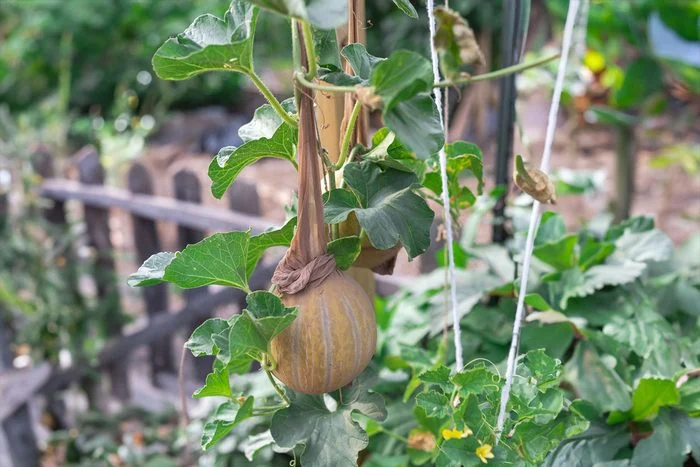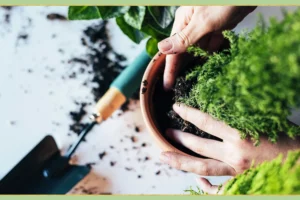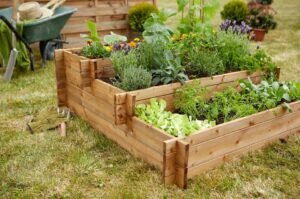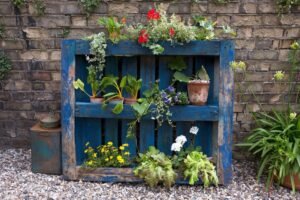Farming one’s own garden offers numerous benefits, from fresh and healthy fruits and vegetables at significantly discounted grocery store prices, to saving money on food bills while simultaneously reducing environmental impact.
Beginner gardeners need to learn how to plan a vegetable garden that suits their climate and soil type, using these practical gardening hacks that will maximize space and resources available to them.
1. Use a Potting Mix Bag to Grow Vegetables
Gardening is an enjoyable way to expand your diet with fresh produce from home while simultaneously cutting food costs. Plus, harvesting your own fresh harvest provides immense satisfaction!
Start by gathering basic gardening tools, like a shovel, hoe, rake and watering can. These items can be found at most home improvement and garden stores; alternatively you could borrow or rent additional tools like a tiller or soil test probe from your county extension office.
Your money-saving solutions also include using repurposed items, like a screwdriver or utility knife to poke holes in a garden soil bag before filling them up with potting mix purchased at home improvement and garden centers.
Install the soil bags in a sunny spot. Plant seeds according to package instructions, keeping soil moist yet not soggy, for optimal success. As plants thrive, thin them out until there’s only one seedling per pot or cell of a seed tray.
Make the most out of your vegetable garden by harvesting regularly. Doing this will encourage your plants to produce more, while ensuring you have enough veggies on hand for mealtimes. If you wait too long, fruit and vegetables could become overripe and lose their nutritional benefits.
2. Create a Vegetable Garden in a Container
Vegetable gardening in containers allows for fresh homegrown produce no matter where you reside. It is an especially great solution for new gardeners or those without access to outdoor space but still want to grow vegetables. A vegetable garden can be created using various vessels like buckets, plastic storage containers, half barrels, wooden planters, terra cotta pots or clay pots, reusable mesh bags or self-watering containers – even self-watering ones!
Consider what type of vegetables will be grown when selecting the size and shape of container you need for them, such as leafy veggies with shallow roots like radishes. Tomatoes, peppers and other root-bound veggies such as tomatoes or peppers need larger containers for their deep root systems. Also take into consideration how much sunlight the plants will receive daily: generally speaking most require six hours or more direct sun. However some can tolerate less.
Once you’ve chosen the ideal container for growing veggies, it’s time to get planting! Use a garden fork to loosen the soil before planting seeds or seedlings – this will improve drainage and enable easier seed germination and growth. Create planting rows or furrows as necessary; label each planting using inexpensive row markers such as wooden or bamboo barbecue skewers which should be inserted about one third into the ground as marking devices.
3. Keep Pests at Bay with Plastic Forks
Pests and other animals can be the bane of many gardeners’ lives, from rabbits and squirrels to raccoons and deer, these pests can wreak havoc with your crops. One clever gardening hack that may help is using plastic forks as barriers against such unwelcome guests.
According to TikTok, placing plastic forks pointing upward can help deter animals from raiding your garden. While this may sound counter-intuitive, House Digest reports that forks serve as an effective animal deterrent by acting both visually and physically as an obstacle – their pointed tips even act as scare tactics if animals attempt to pass by unnoticed.
Forks can also serve as an improvised scaffold for climbing plants, being inserted into the soil and gently weaved around as the plant grows to promote healthy development. Furthermore, this eco-friendly solution is cheaper than alternatives such as chicken wire or chemical-based pesticides to protect gardens.
DIY rain barrels can also be an efficient gardening hack to capture rainwater for harvesting, particularly for newcomers to gardening who may find difficulty with finding enough water for their vegetables and other plants. With a rain barrel you can collect rainwater from your gutter system before turning it into fresh, clean irrigation for your garden.
4. Reuse Water
As droughts and water shortages become more prevalent, home gardeners are turning to inventive means of helping their plants to flourish. One method is reusing household water in the garden instead of pouring it down the drain; doing this may take extra work but could save money on water bills while lessening environmental impacts of gardening.
Rainwater can be collected easily with buckets or funnels attached to your gutter system, while an ideal way of conserving it would be installing a barrel at the end where it flows down so you can store it until needed for watering garden.
Gray water can be an invaluable resource, serving as the drainage from sinks, bathtubs and washing machines that can be used to water plants in your garden. Gray water typically lacks food waste or soap residues making it suitable for plant irrigation purposes but should never be used irrigating edible foods as it could contain pathogens that pose health risks.
Boiling water can also be useful for irrigating gardens, as it contains beneficial minerals for soil. To make this more appropriate for use as irrigation water, just let it cool before use. Alternatively, recycling water from other sources in your home by placing a bucket or pan near any non-self-watering plants like hanging baskets that do not self-water on the floor near them and collecting any of their drainage as they pass by them – then pouring over this collection or pouring it on the ground as garden nourishment!




